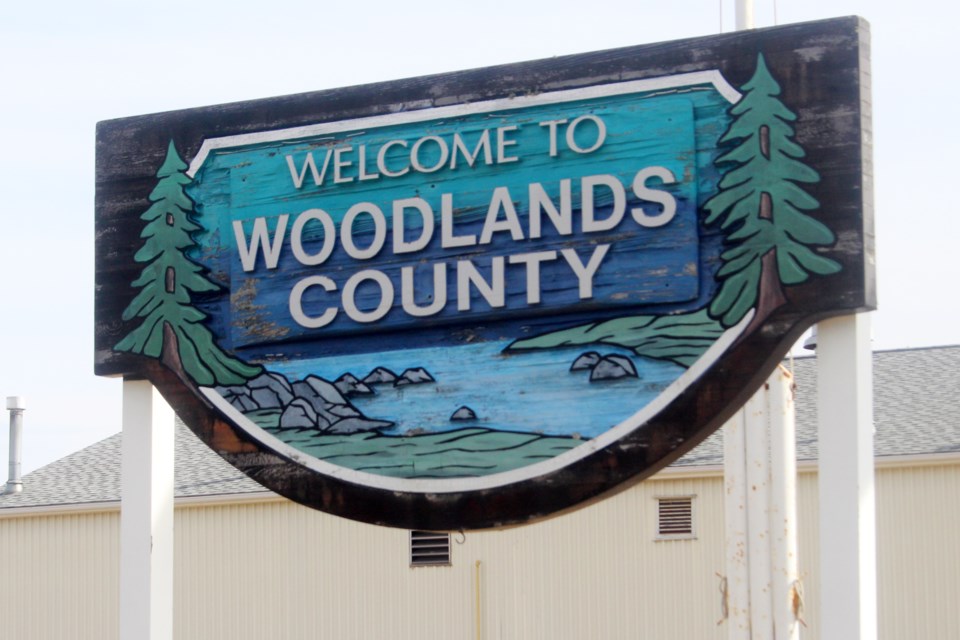FORT ASSINIBOINE — Woodlands County will likely not be proceeding with a cold mix asphalt program or a local improvement tax this year, instead opting to set aside the bulk of the funding designated for such a program in this year's budget and instead focus on coming up with a detailed plan for rehabilitating current cold mix roads.
That was essentially the consensus reached at the March 20 governance & priorities meeting, where councillors passed a motion to bring the matter up at a future council meeting where they can actually re-allocate the $680,000 currently designated in the operating budget for a cold mix program.
Cold mix asphalt is a mixture of regular asphalt materials and oils that is more malleable. As noted by outgoing director of infrastructure Andre Bachand, cold mix is a "step above" regular dust control.
"It ... eliminates the dust pretty much, and it significantly enhances the winter snow and ice control," he said.
Back in January, council had opted to survey local residents who live along cold mix roads whether they would be willing to pay a local improvement tax to fund a cold mix program. That question was also posed to attendees at an open house hosted Feb. 27 at the Fort Assiniboine Legion.
At the March 13 council meeting, Bachand reported they had received 15 responses.Three residents indicated they would pay zero to $5 annually to maintain the existing cold mix on their roads, while seven said they would pay $5 to $200 annually. Four more said they would pay between $200 to $400, while only one said they would pay as much as $1,200 annually.
Bachand also highlighted a couple of individual comments, such as one resident who said that if a local improvement tax is put in place, the amount being paid should be split evenly among property owners.
He said he was preparing to bring a report before council at the March 20 governance and priorities meeting.
Coun. John Burrows then asked if the report would identify what roads are best to start with and what improvements they may need beyond putting down cold mix. Bachand responded that he would be unable to compile all that data, given the short timeframe.
At the March 20 meeting, Bachand's report recommended that all required base work, ditching and culvert work be completed in the Bison Road Pine Meadow area this year, as well as the resurfacing of the Bison Road area roads with cold mix. He also suggested that if a local improvement tax was implemented for the Bison Road area, it would cost all properties $500 per year for seven years.
Noting that he had been one of the biggest proponents of a cold mix program, Coun. Jeremy Wilhelm stated at the March 20 meeting that he now believed this plan was "a little too hasty" and preferred to put it off so that it could be fleshed out a little better.
He suggested taking the $680,000 earmarked in the budget for cold mix and moving it to 2025, followed by working with Bachand's eventual successor (when they come into play) to establish a priority list and a policy that is "clear and unbiased for all the residents in the region."
Wilhelm said he knew some residents would be angry with him for pushing the cold mix program into 2025, but he believed they need to come up with a more structured plan that's based on the county's asset management system and a list of priorities.
Other councillors spoke in favour of working on a more detailed strategy before committing to a cold mix program.
“When we do a project, we should have a detailed plan, not guessing what we are going to be doing," said Coun. Bruce Prestidge.
Bachand strongly recommended to council that they only set aside $480,000 in funding until 2025 and use $200,000 on hiring a consultant to do a lot of this planning work, noting that will allow the new director of infrastructure to get their feet wet.
He indicated that a consultant would be able to identify a lot of the information council needs, such as traffic count data and where there are soft spots that need to be shored up.
“It’ll essentially be everything you need to put a full plan together," Bachand said.



